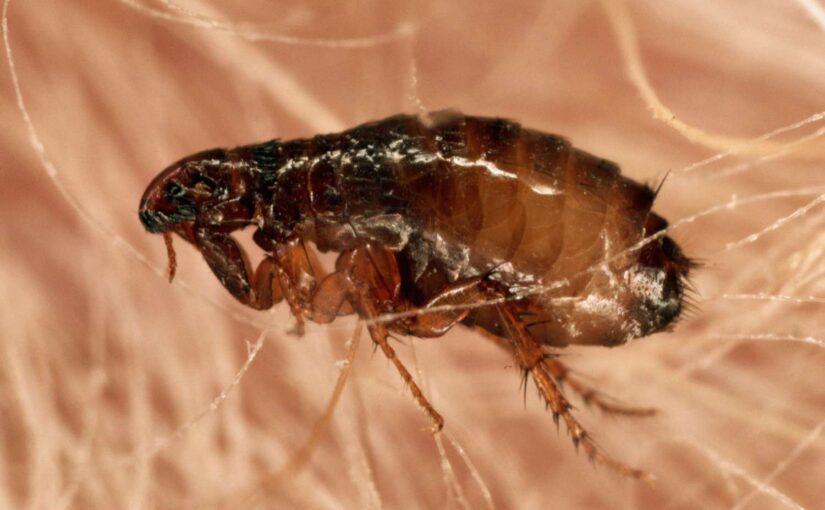Fleas are tiny, yet notorious, ectoparasites that can infest our pets and homes, causing discomfort and irritation. For efficient control and prevention, flea identification is essential. We’ll examine the” what do fleas look like” (Puainta®) physical traits of fleas in this illustrated tutorial, giving you the information you need to identify these annoying insects.
Flea Basics
An Overview of These Parasites: Fleas
The little, nimble insects that feed on blood are called fleas. Since they are ectoparasites, they exist only on the outside of their hosts, which are frequently mammals including people, dogs, and cats.
Common Species of Fleas
The most common flea species include the cat flea (Ctenocephalides felis) and the dog flea (Ctenocephalides canis). Each species may have slight variations in appearance.
Life Cycle and Reproduction
Fleas undergo complete metamorphosis, with stages that include eggs, larvae, pupae, and adults. Understanding their life cycle is essential for control.
Physical Characteristics
Size and Proportions
Fleas are tiny, measuring only 1-2 mm in length. Their small size allows them to move swiftly through their host’s fur.
Body Structure and Segmentation
Fleas have flattened bodies, which aid in their movement through hair. They are also segmented, with three primary body parts: the head, thorax, and abdomen.
Coloration and Markings
Fleas are usually dark brown or reddish-brown, although their color may appear lighter or darker depending on their diet and age. They lack wings but are equipped with strong hind legs designed for jumping.
Head and Mouthparts
Shape and Features of the Flea’s Head
The flea’s head is small and wedge-shaped, enabling it to navigate through the host’s fur easily.
Mandibles and Feeding Adaptations
Fleas have piercing-sucking mouthparts, including mandibles for cutting into the host’s skin and a specialized proboscis for feeding on blood.
Sensory Organs
Fleas possess sensory structures like antennae and small, highly sensitive eyes, which help them locate their host and detect changes in light and temperature.
Legs and Movement
Number and Structure of Flea Legs
Fleas have six legs, and their hind legs are particularly strong and adapted for jumping. This jumping ability is a key feature of their movement.
Adaptations for Jumping and Mobility
Fleas can jump remarkable distances compared to their size, allowing them to move from host to host easily.
How Fleas Move on a Host
Fleas use their legs to navigate across a host’s body and fur while feeding. Their jumping ability helps them reach new feeding sites.
Abdomen and Reproductive Organs
Abdominal Segments and Characteristics
The abdomen is the largest part of the flea’s body and contains reproductive organs necessary for the flea’s life cycle.
Role of the Abdomen in Reproduction
Female fleas lay eggs, which are attached to the host’s fur and fall into the environment. Understanding this aspect of their anatomy is vital for controlling infestations.
How Fleas Reproduce and Lay Eggs
Fleas reproduce prolifically, with each female capable of laying hundreds of eggs. These eggs develop into larvae, pupae, and eventually adult fleas.
Visual Guide
Detailed Illustrations and Images of Fleas
Accurate visual representations of fleas help in their identification. Below are some common visual aids for recognizing fleas:
Side-by-Side Comparisons of Different Flea Species
While cat and dog fleas are the most common, it’s essential to be able to differentiate between them and other less common flea species.
Habitat and Hosts
Common Habitats Where Fleas Are Found
Fleas are often found in areas where their hosts frequent, such as pet bedding, carpets, and upholstered furniture.
Types of Hosts Fleas Infest
Fleas can infest a variety of hosts, including dogs, cats, rodents, and even humans. Understanding their host preference is key to prevention.
Flea Behavior and Host Preference
Fleas are known for their blood-feeding behavior, and their preferences may vary among different species.
Identifying Flea Infestations
Signs of a Flea Infestation
Identifying the signs of a flea infestation includes noticing pets scratching excessively, finding tiny dark insects in their fur, and observing bites on humans.
How to Spot Fleas on Pets and in the Environment
Regularly inspecting your pets and their living spaces is crucial for early detection and control.
Importance of Early Detection
Early detection is essential to prevent flea infestations from becoming severe and difficult to control.
Prevention and Control
Advice on How to Avoid Flea Infestations
Keep your home tidy, treat pets with pest-preventive treatments, and seek veterinary assistance for effective flea management.
Methods for Treating and Controlling Fleas
Pets may be treated with topical or oral drugs, as well as environmental measures like vacuuming and applying insecticides inside your home.
Importance of Maintaining a Flea-Free Environment
Preventing and controlling fleas not only protects your pets but also helps maintain a healthy living environment for your family.
Conclusion
In this visual guide, ‘What do fleas look like” we’ve explored the physical characteristics of fleas, their life cycle, and how to identify them. Recognizing what fleas look like is the first step in effectively managing and preventing infestations. By staying informed and vigilant, you can keep your pets and home flea-free.


